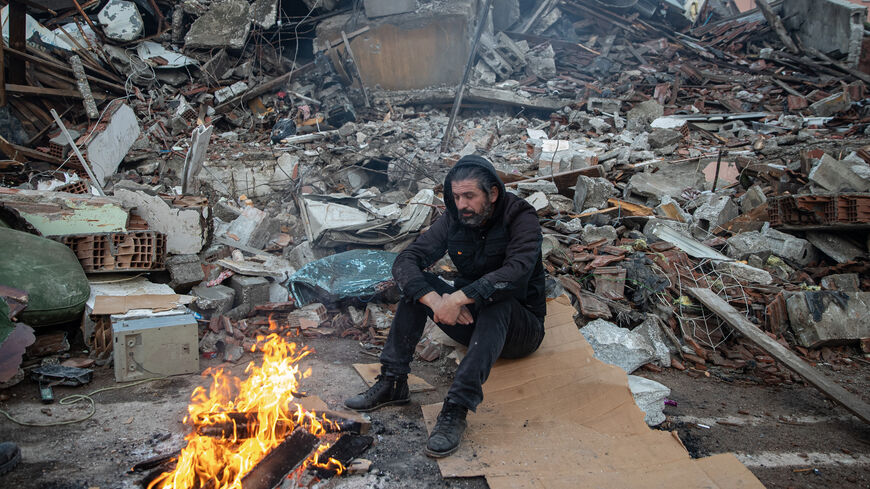PARIS — The massive earthquake that hit eastern Turkey and northwestern Syria early Monday morning was met with shock and horror both in the region and in Europe.
The death toll reached over 20,000 at the time of publication, while thousands of buildings were flattened on both sides of the border as many did not meet the seismic standards — all the more so in ramshackle Syria after more than a decade of war and civil governance neglect. European governments mobilized to send rescue teams and materials, but the geopolitics of the impacted region proved to be an issue.
Aid to Turkey was dispatched while Erdogan was restricting Twitter, having intense quarrels from Sweden to Greece and bickering relentlessly with most other European governments and institutions. Necessity might now force him to tone down the xenophobic language he’s been hammering in view of the forthcoming presidential election set for May 14. Meanwhile, even though he may use the State of Emergency decree to repress opposition even more, the massive rescue policy shortcomings resulting in thousands of people trapped under the debris and freezing until death are expected to exert a heavy toll on his record as an incompetent leader — as hinted at by many furious firsthand reactions of quake victims.
As for aid to Syria, it proved even more tangled and contentious: On the one hand, the Assad regime is under international sanctions, and on the other, most of the area impacted in the country is under rebel control, be they jihadis in the Idlib province, Turkish mercenaries in Afrin or YPG Kurds in the northeast. The delays will lead to more victims dying by the day under pancaked buildings, as duly equipped rescuers from abroad could not arrive in time. While Russia and some Arab states provided help to the Assad-controlled territories, Idlib province remained largely out of reach because the only gateway from Turkey is a road that was badly damaged by the temblor.
The Turkish-Syrian border area at large remains one of the world’s geopolitical quagmires, a major epicenter of tensions and fault lines that run throughout the Middle East toward Europe. It was the threshold for thousands of European jihadis reaching out eastward to the Islamic State in Syria and Iraq in the late 2010s and has remained since then one of the key conduits for westward waves of emigration to Europe by the millions from the whole region, as far as Southwest Asia.
While press reports mentioned that IS prisoners already took advantage of the quake to flee from some jails, the impact of the humanitarian catastrophe may well lead to renewed upheavals and violence, with EU governments on red alert already as detention camps in the Kurdish YPG-controlled zone turned to new IS citadels. Whether the exchange of gunfire between Turkish and Kurdish forces will calm down or develop into a full confrontation in the wake of the earthquake is followed with great concern in Europe, if only because it would put more refugees on the road and unwanted pressure on EU eastern borders.
This hearth of instability in the Levant is also located in between two major world areas of conflict: the Russia-Ukraine war, which is the first armed strife of that scope on European soil since the end of WW II and now entering into its second year, and the spiral of violence in Israel and Palestine since Benjamin Netanyahu’s return to office, which CIA director Bill Burns likened to the beginnings of the second intifada of 2000 (its suicide attacks prepared the ground for al-Qaeda kamikaze 9/11 raids).
After Israeli Cabinet Minister Itamar Ben-Gvir took a provocative stroll on the Temple Mount/Al-Aqsa terrace just like Ariel Sharon did 12 years ago, deadly Israeli army raids killed nine in the West Bank camp of Jenin and Palestinians retaliated, killing seven Jews in front of a synagogue during Shabbat in Jerusalem. US Secretary of State Antony Blinken’s visit on Jan. 30-31 was to no avail, with the Netanyahu Cabinet pushing for more settlements and PA President Mahmoud Abbas refusing to cooperate with Israel as a security partner against terrorism.
Such a spiraling of violence, absent any political agenda, is also perceived in Europe in great awe because of its potential echo in the continent, home to millions of Jews and Muslims. Past decades evidenced that bloody attacks on synagogues or Jewish schools there had but vicariously echoed confrontation in the Holy Land, particularly when political deadlock occurred between Israel and Palestine. Some European sparkles, in such an international context, could send the continent ablaze. In Sweden, after a Quran was burned on Jan. 21 during an authorized demonstration, someone asked permission to set ablaze the Torah in public, which was immediately forbidden: The embers stand ready to be fanned, in a super volatile context. The European social agenda is rife with strikes on both sides of the Channel, caused by two-digit inflation following the Russian gas deliveries shortage, and with huge tensions around the Mediterranean due to enduring illegal immigration. As a sequel, extreme-right parties are on the rise all over the continent, from Norway to Spain and Poland to Greece, with a strong anti-Islam agenda mixing memories of the jihadi bloodbath of the late 2010s with fears of a demographic shift in favor of Muslims due to tidal waves of immigrants, known as the “Great Replacement” threat.
Such are the lenses through which — with drumbeats of war resounding louder every day in Ukraine — Europeans, absent a cohesive political and military capacity, look in shock and awe at the cataclysmic quake in Turkey and Syria and the resumption of violence in the Holy Land.






